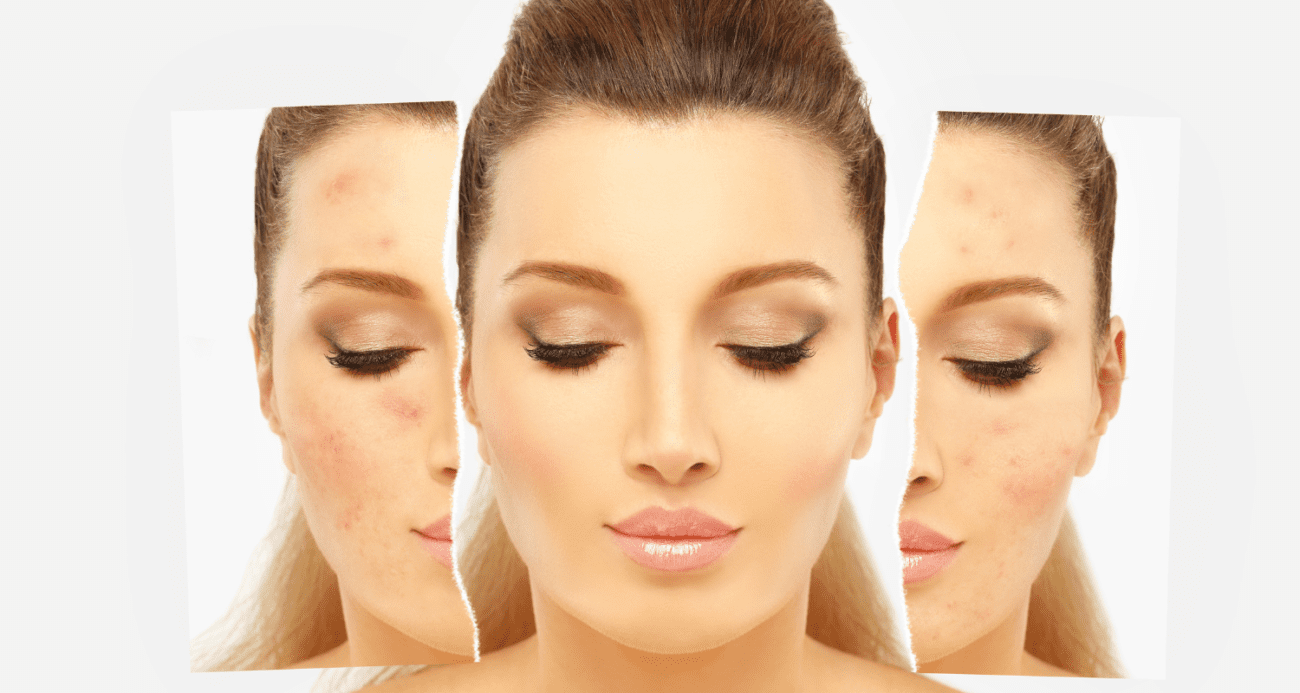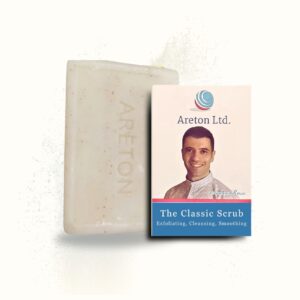Introduction
Understanding your unique skin type is crucial for building an effective skincare routine. Your skin has specific needs and concerns based on whether it tends to be oily, dry, combination, or mature. Customizing your routine to address your skin’s requirements will help you achieve your goals, whether that’s reducing oiliness and breakouts, adding hydration, or combating signs of aging.
One size does not fit all when it comes to skincare. What works for your best friend’s skin may not be suitable for yours. Trying random products without considering your skin’s properties can lead to irritation, breakouts, dryness, and other issues. You need a personalized routine with ingredients and formulations targeted for your skin type.
This guide will explore how to identify your skin type and build a customized skincare regimen to keep it looking healthy and radiant. Understanding the differences between oily, dry, combination, and mature skin will empower you to select the right cleansers, toners, treatments, and moisturizers. With a consistent routine using products formulated for your needs, you can reveal balanced, glowing skin.
Oily Skin
Oily skin is characterized by an overproduction of sebum, leaving the skin looking shiny and greasy. This skin type is prone to breakouts and enlarged pores due to excess oil building up on the surface.
Some common causes of oily skin include:
- Hormonal fluctuations, especially during puberty and menstruation
- Genetics
- Stress
- Hot, humid weather
- Diet high in refined carbs and sugar
- Using skincare products that are too harsh and strip the skin
Oily skin is prone to the following concerns:
- Acne – Excess sebum and dead skin cells can clog pores and cause whiteheads, blackheads, pimples
- Enlarged pores – Pores stretch out from being clogged
- Shine and greasiness – Sebum makes the skin look slick, especially across the T-zone
- Blackheads – Darkened clogged pores due to oxidization
The key is using skincare products that balance and control oil production without over-drying the skin. Look for oil-free and non-comedogenic formulas.
Dry Skin
Dry skin lacks oil and moisture, often feeling tight and itchy. It’s caused by genetics, aging, harsh soaps, dry air, and other environmental factors. Common characteristics and concerns include:
- Flakiness and peeling, especially on the cheeks, arms, legs, and abdomen
- Rough, scaly texture and appearance
- Tight, pulled sensation, sometimes accompanied by stinging or itching
- Increased fine lines and wrinkles
- Redness, irritation, inflammation
- Accentuated pores
- Lackluster complexion and uneven tone
Dry skin suffers from a damaged moisture barrier, which allows water to escape while preventing it from being retained in the deeper layers. This leads to dehydration and a disruption in normal cell processes. Proper skincare can restore moisture levels and improve skin health.
Combination Skin
Combination skin is characterized by having both oily and dry areas on the face. This skin type is very common. The T-zone (forehead, nose, and chin) tends to be oily, while the cheeks are dry and prone to flaking.
Combination skin occurs due to several factors:
- Overactive sebaceous glands in the T-zone produce excess oil
- The cheeks have fewer oil glands and can lack moisture
- Using harsh cleansers can strip moisture from the cheeks
- Hormonal changes related to puberty, periods, or menopause
To care for combination skin:
- Use a gentle cleanser twice daily. Avoid harsh scrubs.
- Apply a toner to the T-zone to remove excess oil. Avoid toners with alcohol.
- Use a light, oil-free moisturizer designed for combination skin. Focus moisture on the cheeks.
- Exfoliate once or twice a week to remove dead skin cells. Avoid over-exfoliating.
- Look for products labeled as non-comedogenic or oil-free.
- Protect skin with an SPF 30 sunscreen every morning.
With the right balance of moisture and oil control, it’s possible to manage the needs of both dry and oily areas for healthy, balanced skin.
Mature Skin
As we age, our skin goes through many changes that can lead to new concerns like wrinkles, dullness, dryness, and loss of elasticity. Mature skin tends to be thinner and more delicate. The production of collagen, elastin, and natural oils starts to slow down. This causes the skin to become drier, lose fullness and firmness, and be more prone to showing signs of aging like fine lines and wrinkles.
The cell turnover process also slows down significantly. Dead skin cells accumulate on the surface rather than shedding as quickly. This can make the skin look dull and uneven. Pigmentation issues like dark spots and age spots are also common with mature skin due to years of sun exposure. The skin barrier weakens over time, making mature skin more vulnerable to irritants.
When caring for mature skin, the goals are to replenish moisture, support the skin barrier, stimulate cell turnover to boost radiance, and reduce visible signs of aging. Ingredients to look for include retinoids to increase cell turnover and collagen production, peptides to stimulate collagen, hyaluronic acid to hydrate, antioxidants like vitamin C to protect against damage, and emollients like ceramides to strengthen the skin barrier. Gentle exfoliation can help sweep away dead skin cells. Broad spectrum sunscreen is critical for prevention. Targeted treatments like vitamin C, retinol, and alpha hydroxy acids can also help reduce the appearance of wrinkles, fine lines, and dullness.

Cleaning
When it comes to cleansers, you’ll want to choose a formula that effectively removes dirt, oil, and makeup without over-drying or irritating your skin.
For oily skin, use a gentle foaming or gel cleanser that contains ingredients like salicylic acid to help control excess oil production. Look for “oil-free” or “non-comedogenic” on the label.
Dry skin needs a creamy, non-foaming cleanser that won’t strip moisture. Avoid cleansers with alcohol or soap, which can be drying. Look for hydrating ingredients like glycerin.
Combination skin requires a balanced formula. Look for a lightweight gel-cream that gently foams and contains mild exfoliants to keep the T-zone clear without parching your cheeks.
Mature skin tends to be dry and sensitive, so a mild, creamy cleanser is best. Seek out anti-aging ingredients like antioxidants and avoid harsh scrubbing.
All skin types should avoid over-washing, limit cleansing to twice a day, and follow up with a hydrating toner. Pat skin dry rather than rubbing to prevent irritation.
Toner
Toner is a crucial step that should not be skipped in any skincare routine. It provides numerous benefits for all skin types.
Oily Skin
For oily skin, toner helps remove any traces of dirt, oil, and impurities left after cleansing. It also helps restore the skin’s natural pH balance. Look for oil-free, alcohol-free toners with ingredients like witch hazel, glycolic acid, or salicylic acid. These will gently exfoliate and mattify the skin. Avoid rich, creamy toners as they may be too heavy.
Dry Skin
Dry skin needs hydrating, oil-free toners that contain humectants like glycerin to draw moisture into the skin. Stay away from toners with alcohol, which can be overly drying. Look for soothing botanical ingredients like aloe, chamomile, rose water, or green tea.
Combination Skin
Look for a toner that balances combination skin. Avoid harsh, drying alcohols. Seek lightweight gel toners with antioxidants to refresh oily areas while providing hydration to dry zones. Ingredients like niacinamide, vitamin C, and hyaluronic acid are great for combination skin.
Mature Skin
Toners with antioxidants are ideal for mature skin to combat signs of aging. Ingredients like vitamin C, green tea, and coenzyme Q10 will nourish the skin while smoothing fine lines and wrinkles. Avoid heavily fragranced, alcohol-based toners, as these can be too harsh and drying.
Serum
Serum is a concentrated treatment product that targets specific skin concerns. Choosing the right serum for your skin type is key.
For oily skin, look for oil-free serums with ingredients like niacinamide and hyaluronic acid. Niacinamide helps control excess oil production while hyaluronic acid hydrates without adding oil. Salicylic acid serums help exfoliate and prevent acne.
For dry skin, hyaluronic acid serums provide an intense hydration boost. Glycerin serums also hydrate while preventing moisture loss. Vitamin C and retinol serums help improve dry skin tone and texture.
For combination skin, look for lightweight serums that balance oily and dry areas. Niacinamide, vitamin C, and peptides can target multiple concerns like oil control, hydration, and improving skin tone.
For mature skin, peptides and growth factors promote collagen production to improve elasticity. Retinol boosts cell turnover for brighter, firmer skin. Vitamin C and hyaluronic acid serums help combat dullness and dryness. Antioxidant serums fight skin damage.
Moisturizer
Choosing the right moisturizer for your skin type is crucial for maintaining healthy, hydrated skin.
For oily skin, look for oil-free, lightweight gel moisturizers that contain ingredients like hyaluronic acid to hydrate without leaving a greasy residue. Avoid heavy creams. The Cetaphil Oil Control Moisturizer with SPF 30 is an excellent drugstore option.
Dry skin needs rich, creamy moisturizers that contain emollients like ceramides and shea butter. The First Aid Beauty Ultra Repair Cream Intense Hydration moisturizer delivers intense hydration.
Combination skin requires balancing hydration on dry areas without over-moisturizing oily zones. The Neutrogena Hydro Boost Gel Cream Extra-Dry Skin Formula offers lightweight hydration.
Mature skin benefits from anti-aging moisturizers with ingredients like retinol and peptides to reduce wrinkles while providing hydration. The Olay Regenerist Micro-Sculpting Cream Fragrance-Free is a top drugstore anti-aging cream.
Using the right moisturizer for your skin type helps keep skin looking healthy, radiant, and balanced. Consult with a dermatologist if you need help determining your skin type.
Conclusion
Finding the right skincare routine for your unique skin type is crucial for maintaining healthy, radiant skin. Oily, dry, combination, and mature skin all have specific needs that must be addressed through proper cleansing, toning, treatments, and moisturization. The key is customizing your routine to provide your skin with what it requires.
For oily skin, focus on oil control, gentle cleansing, hydrating toners, and oil-free moisturizers. Dry skin needs extra hydration through rich cleansers, hydrating toners, and intensive creams. Combination skin requires a balance of hydration and oil control. Mature skin needs gentle cleansing, exfoliation, antioxidant serums, and rich moisturizers.
While it may take some trial and error, taking the time to tailor your routine to your skin’s needs will allow it to look and feel its very best. Consistency and customization are key for optimal skin health and beauty.
Introduction
Understanding your unique skin type is crucial for building an effective skincare routine. Your skin has specific needs and concerns based on whether it tends to be oily, dry, combination, or mature. Customizing your routine to address your skin’s requirements will help you achieve your goals, whether that’s reducing oiliness and breakouts, adding hydration, or combating signs of aging.
One size does not fit all when it comes to skincare. What works for your best friend’s skin may not be suitable for yours. Trying random products without considering your skin’s properties can lead to irritation, breakouts, dryness, and other issues. You need a personalized routine with ingredients and formulations targeted for your skin type.
This guide will explore how to identify your skin type and build a customized skincare regimen to keep it looking healthy and radiant. Understanding the differences between oily, dry, combination, and mature skin will empower you to select the right cleansers, toners, treatments, and moisturizers. With a consistent routine using products formulated for your needs, you can reveal balanced, glowing skin.
Oily Skin
Oily skin is characterized by an overproduction of sebum, leaving the skin looking shiny and greasy. This skin type is prone to breakouts and enlarged pores due to excess oil building up on the surface.
Some common causes of oily skin include:
- Hormonal fluctuations, especially during puberty and menstruation
- Genetics
- Stress
- Hot, humid weather
- Diet high in refined carbs and sugar
- Using skincare products that are too harsh and strip the skin
Oily skin is prone to the following concerns:
- Acne – Excess sebum and dead skin cells can clog pores and cause whiteheads, blackheads, pimples
- Enlarged pores – Pores stretch out from being clogged
- Shine and greasiness – Sebum makes the skin look slick, especially across the T-zone
- Blackheads – Darkened clogged pores due to oxidization
The key is using skincare products that balance and control oil production without over-drying the skin. Look for oil-free and non-comedogenic formulas.
Dry Skin
Dry skin lacks oil and moisture, often feeling tight and itchy. It’s caused by genetics, aging, harsh soaps, dry air, and other environmental factors. Common characteristics and concerns include:
- Flakiness and peeling, especially on the cheeks, arms, legs, and abdomen
- Rough, scaly texture and appearance
- Tight, pulled sensation, sometimes accompanied by stinging or itching
- Increased fine lines and wrinkles
- Redness, irritation, inflammation
- Accentuated pores
- Lackluster complexion and uneven tone
Dry skin suffers from a damaged moisture barrier, which allows water to escape while preventing it from being retained in the deeper layers. This leads to dehydration and a disruption in normal cell processes. Proper skincare can restore moisture levels and improve skin health.
Combination Skin
Combination skin is characterized by having both oily and dry areas on the face. This skin type is very common. The T-zone (forehead, nose, and chin) tends to be oily, while the cheeks are dry and prone to flaking.
Combination skin occurs due to several factors:
- Overactive sebaceous glands in the T-zone produce excess oil
- The cheeks have fewer oil glands and can lack moisture
- Using harsh cleansers can strip moisture from the cheeks
- Hormonal changes related to puberty, periods, or menopause
To care for combination skin:
- Use a gentle cleanser twice daily. Avoid harsh scrubs.
- Apply a toner to the T-zone to remove excess oil. Avoid toners with alcohol.
- Use a light, oil-free moisturizer designed for combination skin. Focus moisture on the cheeks.
- Exfoliate once or twice a week to remove dead skin cells. Avoid over-exfoliating.
- Look for products labeled as non-comedogenic or oil-free.
- Protect skin with an SPF 30 sunscreen every morning.
With the right balance of moisture and oil control, it’s possible to manage the needs of both dry and oily areas for healthy, balanced skin.
Mature Skin
As we age, our skin goes through many changes that can lead to new concerns like wrinkles, dullness, dryness, and loss of elasticity. Mature skin tends to be thinner and more delicate. The production of collagen, elastin, and natural oils starts to slow down. This causes the skin to become drier, lose fullness and firmness, and be more prone to showing signs of aging like fine lines and wrinkles.
The cell turnover process also slows down significantly. Dead skin cells accumulate on the surface rather than shedding as quickly. This can make the skin look dull and uneven. Pigmentation issues like dark spots and age spots are also common with mature skin due to years of sun exposure. The skin barrier weakens over time, making mature skin more vulnerable to irritants.
When caring for mature skin, the goals are to replenish moisture, support the skin barrier, stimulate cell turnover to boost radiance, and reduce visible signs of aging. Ingredients to look for include retinoids to increase cell turnover and collagen production, peptides to stimulate collagen, hyaluronic acid to hydrate, antioxidants like vitamin C to protect against damage, and emollients like ceramides to strengthen the skin barrier. Gentle exfoliation can help sweep away dead skin cells. Broad spectrum sunscreen is critical for prevention. Targeted treatments like vitamin C, retinol, and alpha hydroxy acids can also help reduce the appearance of wrinkles, fine lines, and dullness.
 Rated 0 out of 5¡A la Venta!Add to basket
Rated 0 out of 5¡A la Venta!Add to basket$10.00Original price was: $10.00.$5.99Current price is: $5.99. Rated 0 out of 5¡A la Venta!Add to basket
Rated 0 out of 5¡A la Venta!Add to basket$10.00Original price was: $10.00.$5.99Current price is: $5.99.


